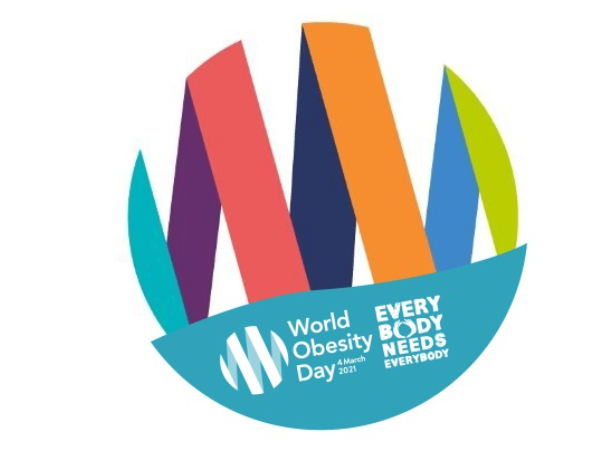Over 1 trillion US$ are the medical consequences of obesity by 2025 (globally)
World Obesity Day
March 4, 2022
The case for fighting obesity
- 800 million people around the world are living with obesity.
- Childhood obesity is expected to increase by 60% over the next decade, reaching 250 million by 2030.
- Over 1 trillion US$ are the medical consequences of obesity by 2025.
- People living with obesity are twice as likely to be hospitalized if tested positive for COVID-19.
Take action on World Obesity Day
Obesity is a global problem, and it affects us all. 800 million of us are living with the disease, with millions more at risk. We know the roots of obesity run deep, and the only way we can make progress is by working together. That’s why we’re calling for action at the local, national, and global levels.
Find out more about World Obesity Day
OBESITY @ WHO
Overview
Overweight and obesity are defined as abnormal or excessive fat accumulation that presents a risk to health. A body mass index (BMI) over 25 is considered overweight, and over 30 is obese. The issue has grown to epidemic proportions, with over 4 million people dying each year as a result of being overweight or obese in 2017 according to the global burden of disease.
Rates of overweight and obesity continue to grow in adults and children. From 1975 to 2016, the prevalence of overweight or obese children and adolescents aged 5–19 years increased more than four-fold from 4% to 18% globally.
Obesity is one side of the double burden of malnutrition, and today more people are obese than underweight in every region except sub-Saharan Africa and Asia. Once considered a problem only in high-income countries, overweight and obesity are now dramatically on the rise in low- and middle-income countries, particularly in urban settings. The vast majority of overweight or obese children live in developing countries, where the rate of increase has been more than 30% higher than that of developed countries.
Complications
Overweight and obesity are major risk factors for a number of chronic diseases, including cardiovascular diseases such as heart disease and stroke, which are the leading causes of death worldwide. Being overweight can also lead to diabetes and its associated conditions, including blindness, limb amputations, and the need for dialysis. Rates of diabetes have quadrupled since around the world since 1980. Carrying excess weight can lead to musculoskeletal disorders including osteoarthritis. Obesity is also associated with some cancers, including endometrial, breast, ovarian, prostate, liver, gallbladder, kidney and colon. The risk of these noncommunicable diseases increases even when a person is only slightly overweight and grows more serious as the body mass index (BMI) climbs.
Obesity in childhood is associated with a wide range of serious health complications and an increased risk of premature onset of related illnesses. Studies have found that without intervention, children and adolescents with obesity will likely continue to be obese into adulthood.
Prevention and control
Many of the causes of overweight and obesity are preventable and reversable. However, no country has yet to reverse the growth of this epidemic. Although other factors are involved, the fundamental cause of obesity is an imbalance of calories consumed and calories expended. As global diets have changed in recent decades, there has been an increase in the consumption of energy-dense foods high in fat and free sugars. There has also been a decrease in physical activity due to the changing nature of many types of work, more access to transportation and increased urbanization.
Lowering the risk of overweight and obesity includes reducing the number of calories consumed from fats and sugars, increasing the portion of daily intake of fruit, vegetables, legumes, whole grains and nuts, and engaging in regular physical activity (60 minutes per day for children and 150 minutes per week for adults).
In babies, studies have shown that exclusive breastfeeding from birth to 6 months of age reduces the risk of infants becoming overweight or obese.
Originally published at https://www.who.int












